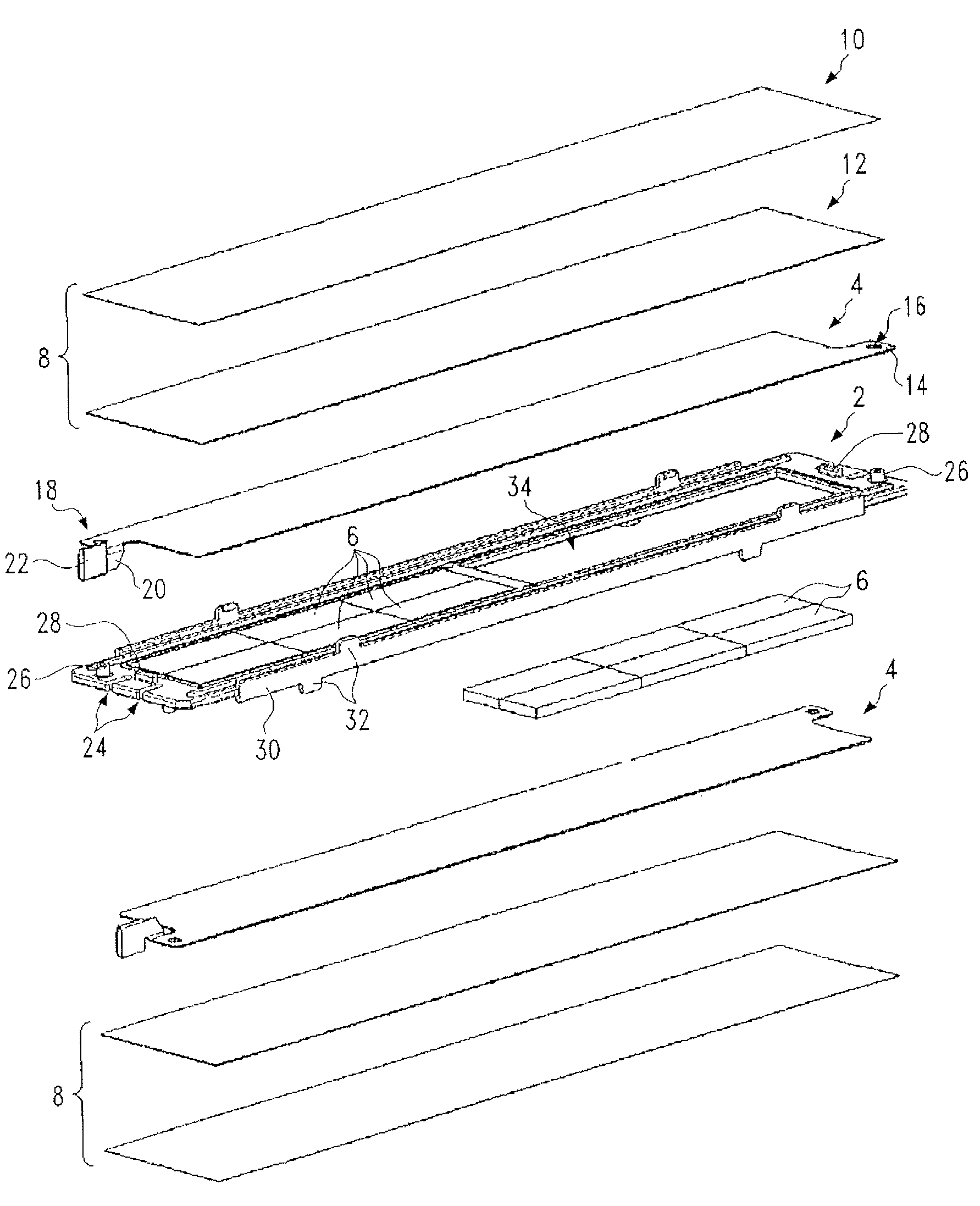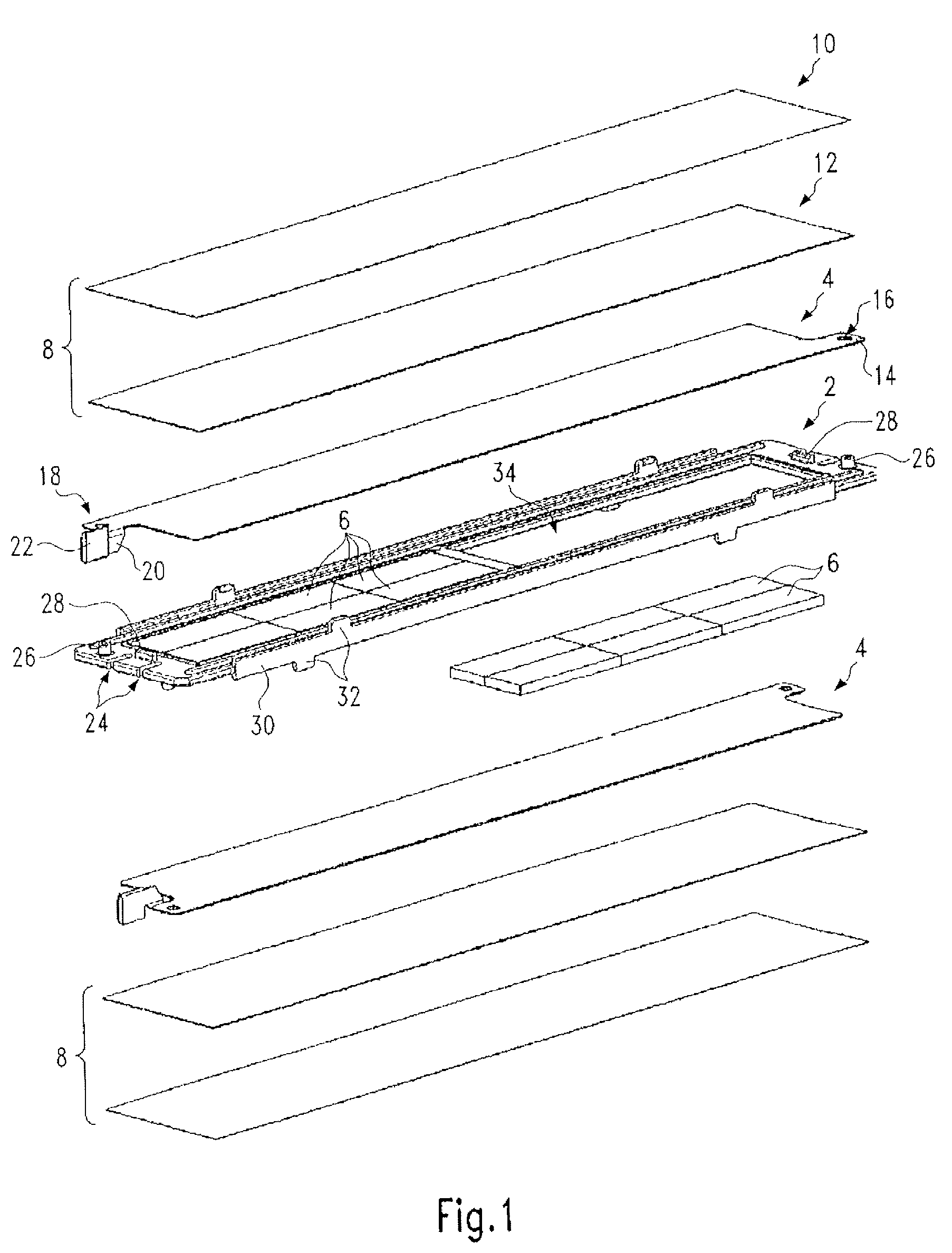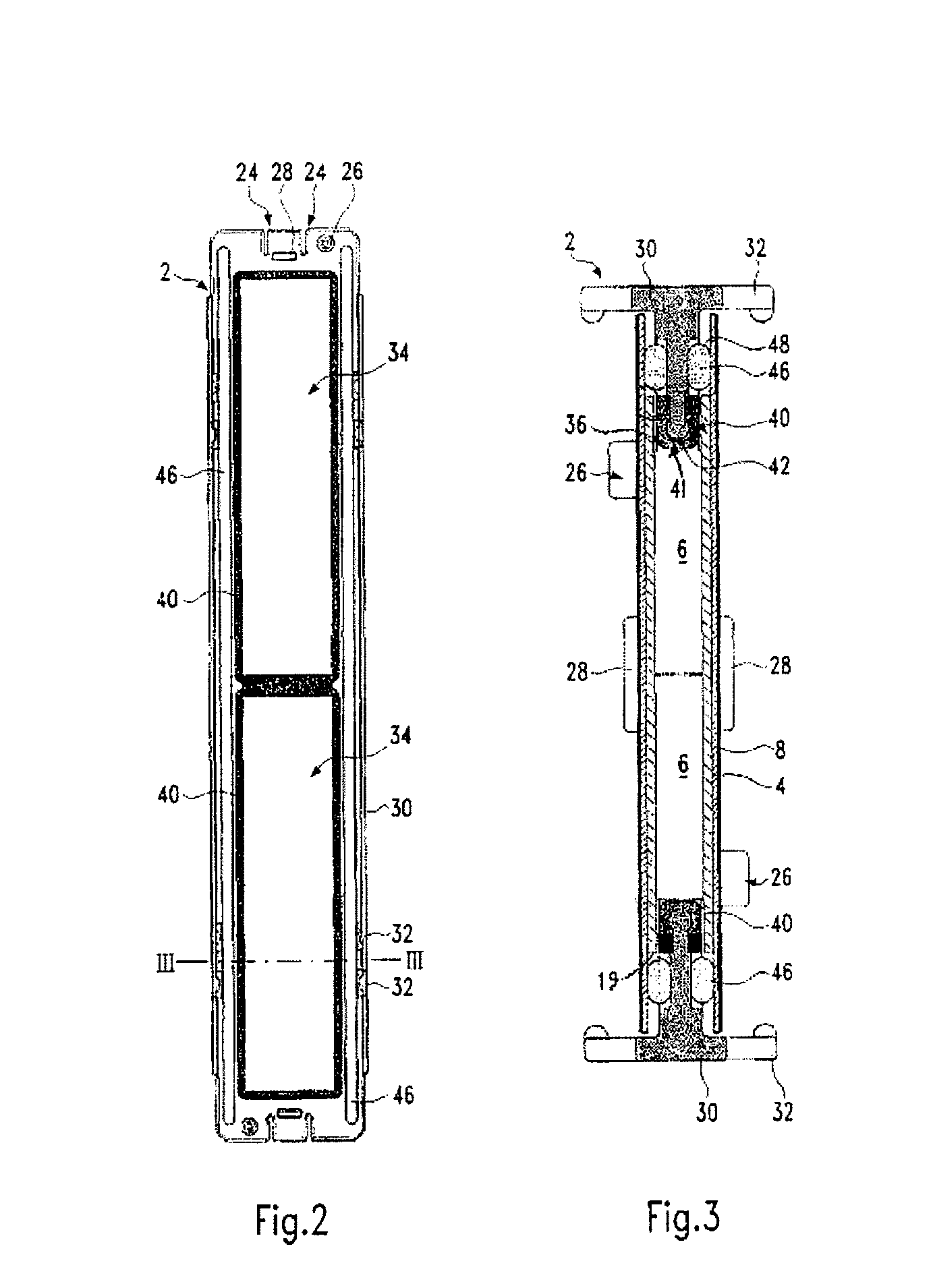Heat-generating element of a heating device
a heating device and heat-generating element technology, applied in the direction of resistors, non-adjustable resistors, air heaters, etc., can solve the problems of disturbance of the self-regulation characteristics of ptc elements, local overheating, and damage to heat-generating elements, so as to increase the safety and increase the safety
- Summary
- Abstract
- Description
- Claims
- Application Information
AI Technical Summary
Benefits of technology
Problems solved by technology
Method used
Image
Examples
Embodiment Construction
[0052]FIG. 1 shows a perspective side-view of the essential parts of an embodiment of a heat-generating element in a blown-up representation. The heat-generating element has a positioning frame 2, made of injection-moulded plastic, whose middle longitudinal axis forms a bisecting plane of the heat-generating element. This element is essentially formed with one side the mirror image of the other, and initially has contact plates 4 provided on each side of the positioning frame 2, said contact plates holding between them the PTC elements 6 held in the positioning frame 2. On the exterior side of the contact plates 4 is located a two-layer insulating layer 8, comprising an exterior insulating foil 10 and an inner ceramic plate 12, that fits directly against the contact plate 4. The ceramic plate 12 is a relatively thin aluminium oxide plate that provides very good electric dielectric strength of roughly 28 kV / mm and good thermal conductivity of more than 24 W / (m K). The plastic foil 10...
PUM
 Login to View More
Login to View More Abstract
Description
Claims
Application Information
 Login to View More
Login to View More - R&D
- Intellectual Property
- Life Sciences
- Materials
- Tech Scout
- Unparalleled Data Quality
- Higher Quality Content
- 60% Fewer Hallucinations
Browse by: Latest US Patents, China's latest patents, Technical Efficacy Thesaurus, Application Domain, Technology Topic, Popular Technical Reports.
© 2025 PatSnap. All rights reserved.Legal|Privacy policy|Modern Slavery Act Transparency Statement|Sitemap|About US| Contact US: help@patsnap.com



